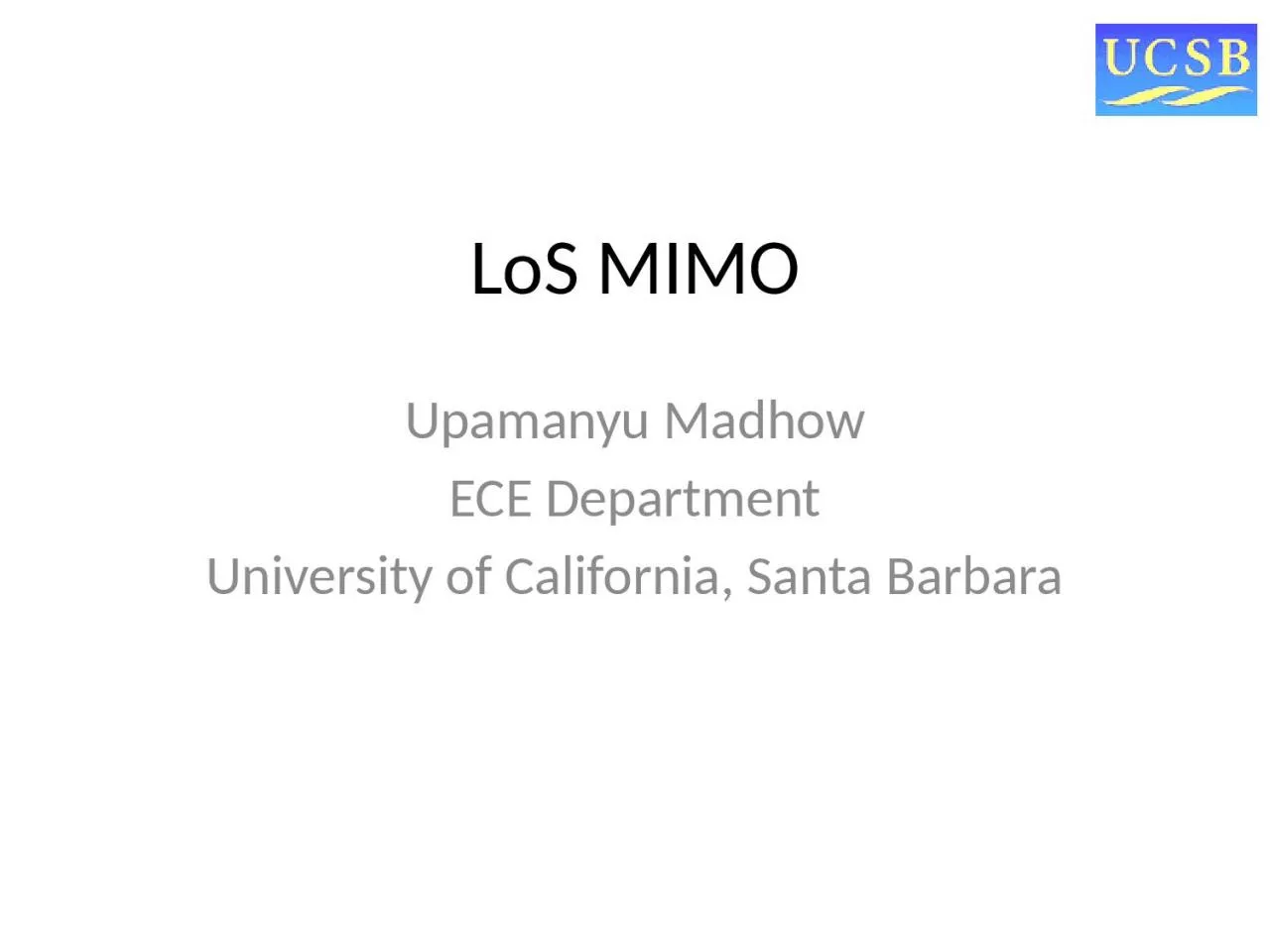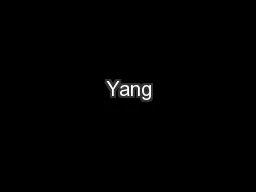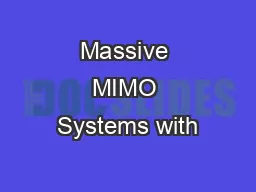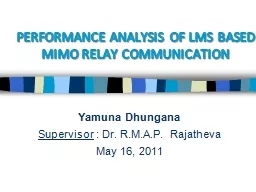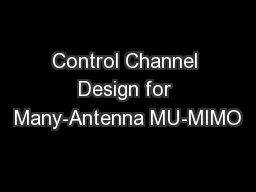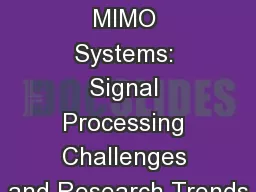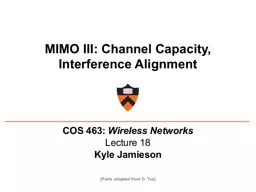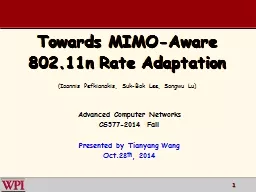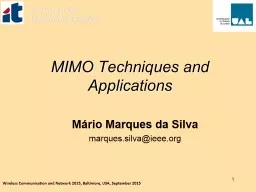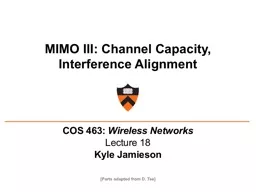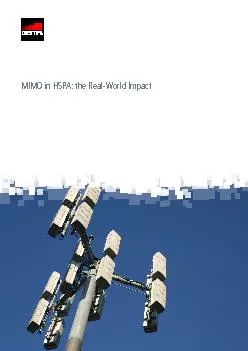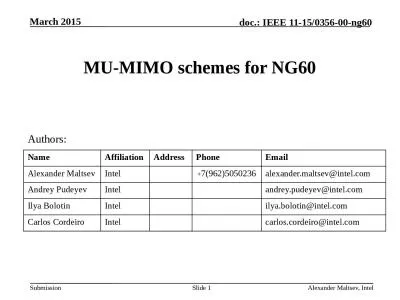PPT-LoS MIMO
Author : windbey | Published Date : 2020-08-28
ECE Department University of California Santa Barbara Collaborators Prof Mark Rodwell Eric Torkildson now at Nokia Bharath A Colin Sheldon Babak Mamandipoor Mahmoud
Presentation Embed Code
Download Presentation
Download Presentation The PPT/PDF document "LoS MIMO" is the property of its rightful owner. Permission is granted to download and print the materials on this website for personal, non-commercial use only, and to display it on your personal computer provided you do not modify the materials and that you retain all copyright notices contained in the materials. By downloading content from our website, you accept the terms of this agreement.
LoS MIMO: Transcript
Download Rules Of Document
"LoS MIMO"The content belongs to its owner. You may download and print it for personal use, without modification, and keep all copyright notices. By downloading, you agree to these terms.
Related Documents

